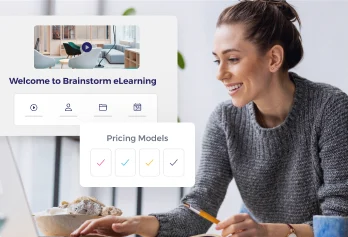Amid the change and uncertainty of the current world of work, employees crave understanding about how their efforts impact the company and the world around them. Organizational leaders are adding community and social responsibility goals to their strategies, and employees are indicating that they want both meaningful work and purpose driven learning if they are to stay with an organization over time. Lisa Sterling, Ceridian's chief people and culture officer, sums it up this way, according to a press release: "If people feel they have purpose, the power to do their job, and they feel they're being invested in, it's hard to give that up." Yet, only 51% of respondents to Ceridian's "2018-19 Pulse of Talent" report said that they feel they are making an impact. And 86% of people thought it was important for the company to invest in learning opportunities, including 51% who mark learning as extremely important. Leaders play a critical role in connecting people to a sense of purpose and to the kinds of learning opportunities that encourage people to stay. Here are five ways managers can tap into the power of purpose and meaning.
1. Make clear the goals of the organization
People want to feel part of a larger whole. It's a leader's responsibility to share the organization's goals and initiatives with their team and to explain the reason for current strategies. In addition, show the alignment between training and development and the goals of the organization, especially if training is mandated. Clarify how knowledge and skill development is linked to employee performance, and in turn, linked to achievement of the organization's goals. Help everyone feel like a contributor to success.
2. Connect employees to the people they impact
A sense of purpose is very personal. Tell stories about the real people who are benefiting from your employees' contributions. Introduce people and help them build relationships. Draw a line from your department's outputs and services to the organization's clients, guests or customers.
3. Provide learning & development opportunities
Make sure that employees' time and energy spent on learning suits a purpose that's relevant and important to the employee personally. Enable employees to use your learning management system as a guide for developing a rich repertoire of skills. Give employees opportunities to enroll in learning paths designed to promote formal and informal development activities in their areas of interest and developing expertise. Encourage your team to document and demonstrate skills and to prove themselves to be experts and go-to resources in the organization.
4. Offer exciting projects
Assign employees projects that tap into their talents, and get them involved in work that has real impact. Special projects give employees opportunities to engage with people they don't typically see and expose them to activities that can accelerate their development. Often, the vision and goals behind special projects can be quite meaningful to employees, further strengthening their sense of purpose.
5. Connect employees to peers
People draw meaning and purpose from their interactions with others. You can foster supportive working and learning cultures and enable systems that link people to one another. Build an engaging team environment that encourages sharing and promotes peer-to-peer development. There are all kinds of potential links and interactions that can offer a means to find meaning in one's career. One of the leader's most important roles is to make connections to purpose driven work and purpose driven learning.





